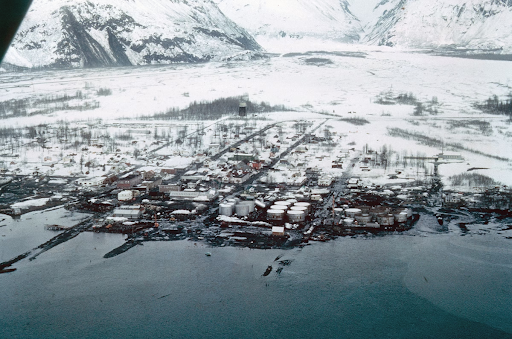The Great Alaska Earthquake and Tsunami: Better Prepared Today
[ad_1]
How Might it be Different Now?
Now, 60 years later, there are different considerations for how the U.S. should respond to a similar disaster. Alaska is a seismically active area and has had other smaller earthquakes since the Great Alaska earthquake, but Alaska is very resilient. An 8.2 magnitude earthquake occurred in 2021 along the sparsely populated Chignik region of the Alaskan peninsula. No casualties or serious damage were reported. Years earlier, however, a 7.1 magnitude earthquake hit the Anchorage area in 2018, injuring 117 people and causing $76 million in damages.
Additionally, Alaska has changed and grown since 1964. Then, the total population of Alaska was just 250,000. The largest city was Anchorage, with a population of 100,000. Today, Alaska’s population is over 730,000 and Anchorage’s is 288,000.
Valdez had a population of 1,200 in 1964. The tsunami wave run-up was as high as 170 feet. Half of the downtown business district was demolished, massive damage was caused to the waterfront, storage, warehousing and railroad facilities. The town’s entire fishing fleet was also destroyed.
Commercial fishing fleets in Central and Western Alaska have also grown, and while some of the communities were relocated, the harbors are still vulnerable to tsunamis. South Central and Southeast Alaska are also now major tourist destinations. Over 40 cruise ships visited Valdez alone last year. The cruise calendar extends from April through October.
The threat from earthquake-triggered landslides, debris flows, and locally generated tsunamis are under growing scrutiny. Degrading permafrost, retreating glaciers, and changing climates are expected to increase these threats.
Adding Oil to the Mix
The oil and natural gas industries are a key part of Alaska’s energy-intensive economy. Alaska’s North Slope contains six of the 100 largest oil fields in the United States and one of the 100 largest natural gas fields. The Prudhoe Bay field is among the 10 largest oil fields in the nation.
Today, Valdez is the southern terminus of the Trans Alaska Pipeline and, with a population of around 4,000, handles the shipment of Alaskan North Slope oil to the rest of the U.S. Huge oil storage facilities are located along the harbor.
The state currently has five oil refineries capable of producing a combined 167,000 barrels per day. Between January 2023-2024, Alaska produced 171,458,547 barrels of crude oil, and averaged 350 billion cubic feet of natural gas annually.
NOAA Planning and Preparation
While the systems to respond to environmental emergencies were limited decades ago, today, the Emergency Response Division (ERD) of NOAA’s Office of Response and Restoration, or OR&R, provides scientific support and decision-support tools to respond to damage to oil and energy infrastructure along the coast, resulting from a major earthquake.
ERD uses its collection of software and GIS tools to respond to spills resulting from damaged oil and chemical infrastructure after a major earthquake. Examples include General NOAA Operational Modeling Environment (GNOME), NOAA’s suite of modeling tools for predicting the fate and transport of pollutants spilled in water, and the Environmental Response Management Application (ERMA®), an online mapping tool that integrates data (like habitats, weather, and currents) into one location for experts who are responding to environmental disasters. OR&R also develops planning tools, such as the Trajectory Analysis Planner (TAP) and Environmental Sensitivity Index (ESI) maps and data to help state and federal partners prepare for a major spill before it happens.
Over the past 10 years, ERD has assisted Alaska in responding to about 200 spills in Alaska, mitigating the impacts of oil to the region’s sensitive environmental resources, critical fisheries, and coastal communities. As new challenges come on the horizon—such as container spills, shipboard fires from lithium ion batteries, Low Sulfur Fuel Oil spills, releases of compressed gas transported by rail, and dielectric fluid spills—ERD is preparing to meet those new response needs in the future.
Resources
NOAA National Centers for Environmental Information: On This Day: Great Alaska Earthquake and Tsunami
U.S. Geological Survey: M9.2 Alaska Earthquake and Tsunami of March 27, 1964
The Atlantic: 1964: Alaska’s Good Friday Earthquake
SFGATE: The day in 1964 when a tsunami ravaged Crescent City
Alaska Department of Natural Resources: Division of Oil and Gas: All Pipelines
U.S. Energy Information Administration (EIA): Alaska Profile Analysis
[ad_2]


